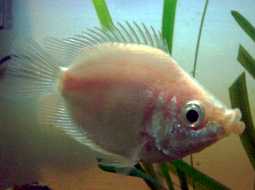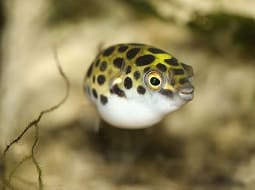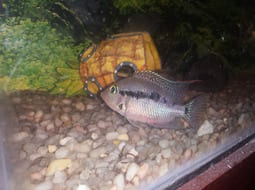
Loading Aqualapp ...
Care and Compatibility of Fire Fish Dragon Blood - Aulonocara Firefish
Introduction
The Fire Fish Dragon Blood has an elongated and laterally compressed body, with intense red coloration and long, showy fins. Males usually have more intense colors and longer fins than females. They can reach sizes of up to 15 centimeters in length.
Behavior
The Fire Fish Dragon Blood, also known as Aulonocara Firefish, is a freshwater cichlid fish found in Lake Malawi, Africa. It is known for its vibrant red coloration and elongated fins, which give it a striking appearance in the aquarium. They are peaceful and sociable fish that adapt well to life in a community aquarium.
Sexual Dimorphism
Sexual dimorphism in Aulonocara sp. "Firefish" is minimal and difficult to distinguish. Both males and females have a similar appearance, though males may display slightly more intense colors and increased aggression during breeding season.
Reproduction
Breeding the Fire Fish Dragon Blood can be challenging and requires specific conditions. It is recommended to keep a group of several females with one male to increase the chances of success. They will build nests in sandy substrate areas, and the females will deposit their eggs there. The males will fertilize the eggs and guard them until they hatch. The fry can be fed with powdered foods and small aquatic organisms.
Aquarium Conditions
Aulonocara sp. "Firefish", commonly known as the firefish cichlid, requires a spacious aquarium with rocks to create structures and caves. It prefers alkaline water and a warm temperature. Aquarium décor should include large rocks and sand substrate. Maintaining water quality is crucial and providing a balanced diet.
Feeding
They are omnivorous fish and accept a variety of foods in their diet. They primarily feed on small aquatic organisms such as crustaceans and insect larvae, but they can also consume commercial foods in the form of pellets or flakes, as well as fresh foods such as shrimp and worms.
Complexity
Caring for Aulonocara sp. "Firefish" can be moderately challenging. They are territorial fish and can be aggressive towards other cichlids. It's recommended to keep them in a larger group or in a African cichlid tank. They are omnivores and accept a variety of foods, but prefer live and frozen foods.
In case you need more help, or if you want to know into any topic related to the Aulonocara Firefish (Fire Fish Dragon Blood) and even any other species you can use the forums to ask what you need.
To do an analysis more detailed about coexistence and behavior of Aulonocara Firefish (Fire Fish Dragon Blood) use the Aquarium simulation tool, if you do this you can test different ways to combine the Fire Fish Dragon Blood with other fishes giving the dimensions and space on you aquarium, on this way you can known the optimal configuration for keep the fishes that you want.
You can also find out the 28 species compatible with the Aulonocara Firefish (Fire Fish Dragon Blood) can live together.
Note: The parameters of the water such as PH and temperature are also used to calculate the compatibility of the species.
Compatible species (28)
Compatible (2 Species)
Territorial fish can usually live with fish protected with armor, since they cannot harm them because of their tough skin, what must be taken into account is to have an aquarium with favorable dimensions so that each fish can delimit a territory, since that most armored fish are also bottom fish and like to be looking for places to hide.
Los peces territoriales por lo general pueden convivir con peces protegidos con coraza, ya que no pueden hacerles daño por su dura piel, lo que si hay que tener en cuenta es tener un acuario con dimensiones favorables para que cada pez pueda delimitar un territorio, ya que la mayoría de peces acorazados son también peces de fondo y les gusta estar buscando lugares donde ocultarse.
Similar Sizes (1 Species)
They can coexist if they are the same size or very similar sizes, it does not work in all cases, there may be exceptions.
With Reservation (5 Species)
Compatible in some cases, it depends on the nature and personality of the fish.
Las especies territoriales por lo general pueden convivir con especies protegidas con coraza, ya que no pueden hacerles daño por su dura piel, lo que si hay que tener en cuenta es tener un acuario con dimensiones favorables para que cada pez pueda delimitar un territorio, ya que la mayoría de peces acorazados son también peces de fondo y les gusta estar buscando lugares donde ocultarse.
Showdown over territory (2 Species)
Fish can live together as long as the space is spacious enough to delimit a territory, otherwise there may be aggressions for competing for the territory.
Considerable size difference (3 Species)
They can coexist while they are similar in size or the size difference is not very abysmal, since as the fish grows it increases the chances of eating its partner that did not grow much.
Compatible if space is enough (15 Species)
They can coexist together if the aquarium they share is large and spacious enough for both species to feel good, as some fish may attack others to feel that they have little space and try to eliminate the competition.
Fire Fish Dragon Blood
Aulonocara Firefish
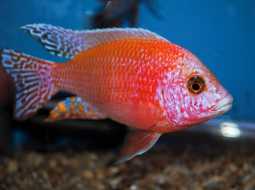
- Ph: 7.6 - 8.6
- Temperature (c°): 26 - 28
- Measures: 10 cm - 13cm
- Aquarium Capacity:
65 Liters - 17 Gallons - Alimentación: Omnivores
- Colores: Blue, Orange, Red
- Comportamiento: Active, Likes to take refuge, Peaceful, Territorial
- Habitad: African
- Tamaño: Medium
- Taxonomía: Cichlids, Fish, Mbunas
- Tipo de Agua: Sweet water, Tropical waters
- Velocidad de nado o movimiento: Normal
- Zona de Nado: Swim in the middle of the aquarium


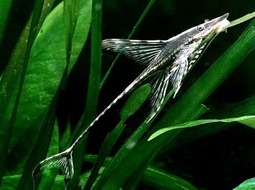
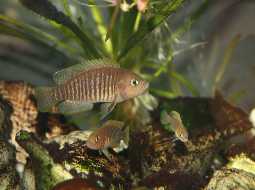


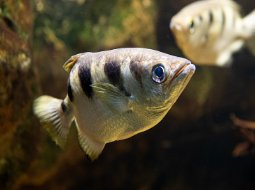
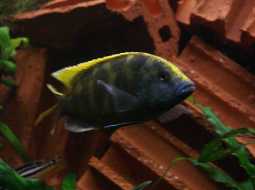



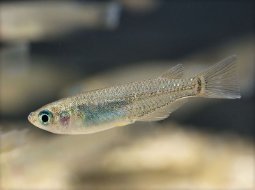


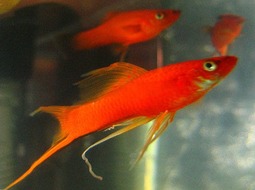

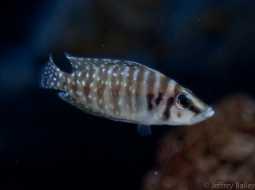


.jpg)



